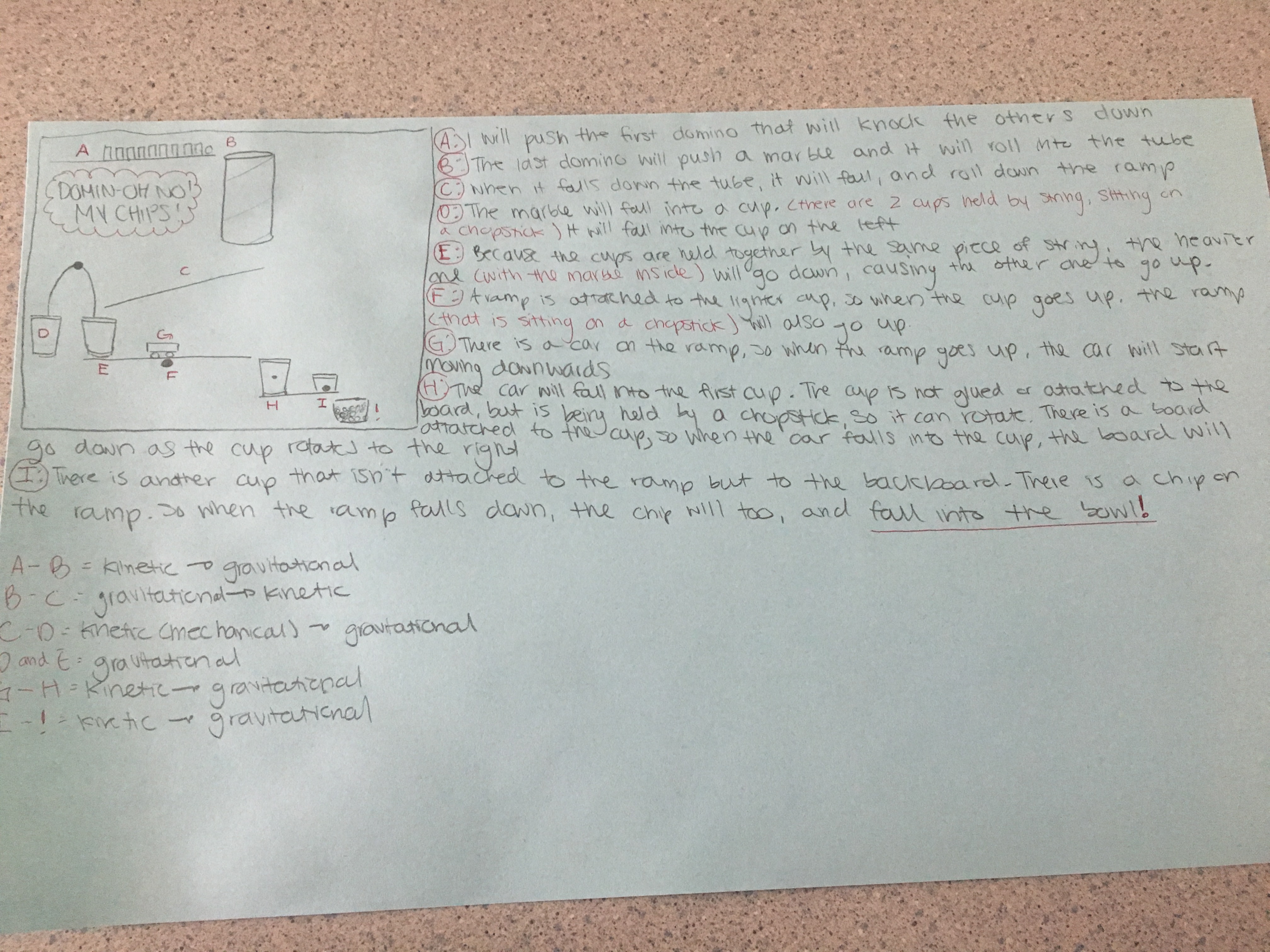↑ A drawing of my Rube Goldberg machine (“Domin-Oh No! My Chips!)
EXPLANATION: (better explained in the photo)
A: Dominoes will fall and hit one another
B: The last domino will hit a marble and it will fall into the tube
C: The marble will fall onto a ramp and will roll down
D: The marble will fall into the left cup and the cup will go down*
E: The right cup will go up along with the ramp attached to the bottom of the cup
F: The ramp since it’s attached to the cup it will also go up with it**
G: The car on the ramp will go down the ramp as the ramp goes up and tilts downwards
H: The car will fall into the first cup and it is also attached to a ramp. Both of them will rotate to the right when the car falls into it***
I: There is another cup that has hole in the bottom with a chip inside. The bottom is blocked by the ramp so once it rotates the chip can go down the ramp and into the bowl. (!)
*The 2 cups are connected and held by a piece of string. The string will sit on a chopstick inserted into the backboard. So when one cup is heavier than the other, it will go down as the other one will go up.
**The ramp is carefully sitting balanced on a chopstick so since it’s only attached to a cup, when the cup goes up the ramp will follow
***The cup isn’t attached to the backboard but is being held by a chopstick inserted in the backboard. So when the car falls into it it will rotate right on the chopstick, and since the ramp is attached to the bottom of the cup, it will also rotate right.
ENERGY TRANSFERS:
A-B: kinetic → gravitational
B-C: gravitational → kinetic
C-D: kinetic → (mechanical) → gravitational
D & E: gravitational
G-H: kinetic → gravitational
I-!: kinetic → gravitational → kinetic
VIDEO OF MY MACHINE IN MOTION:






